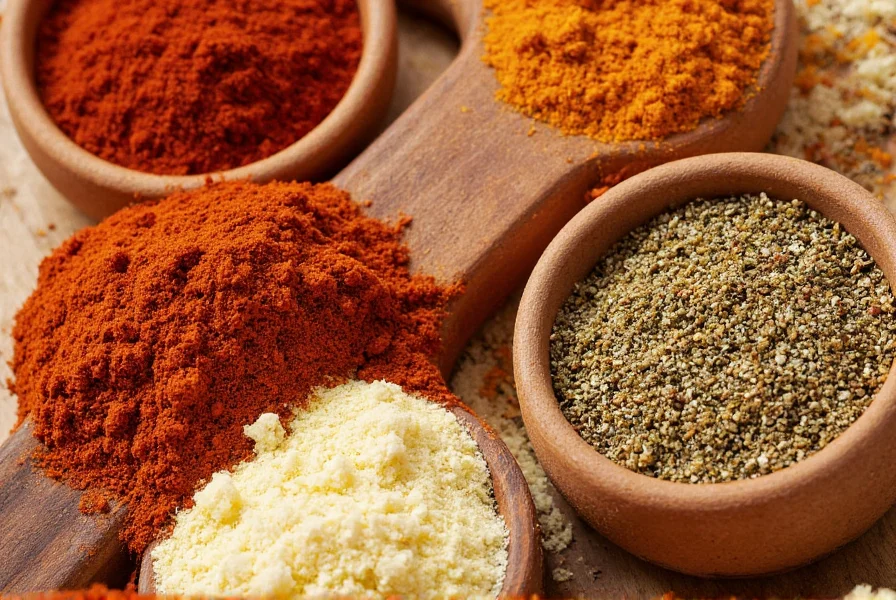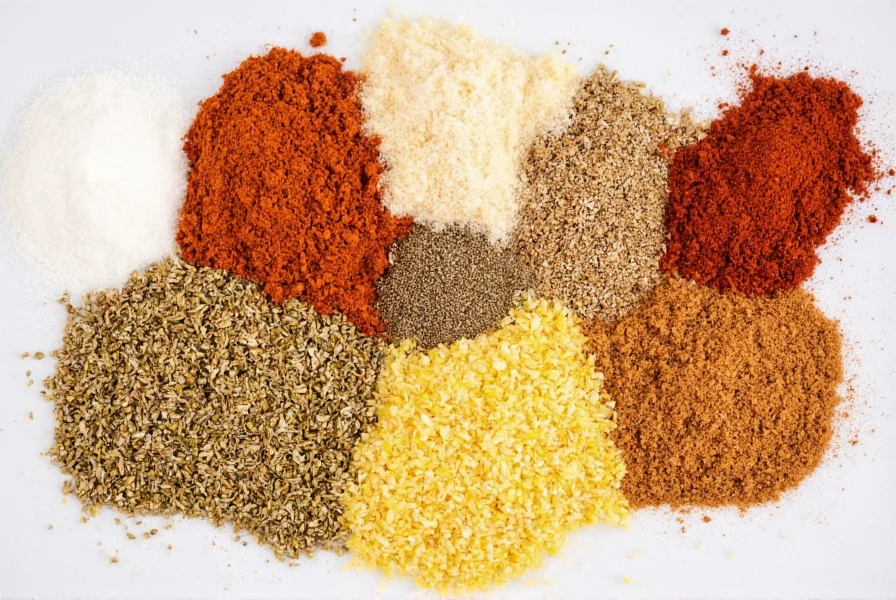Creating exceptional chili relies on understanding spice chemistry and how different seasonings interact during cooking. While recipes vary by region and personal preference, certain spices form the essential foundation that transforms simple ingredients into a complex, satisfying dish. This guide explores not just which spices to use, but why they work, when to add them, and how to balance flavors for restaurant-quality results at home.
The Essential Spice Foundation
Every great chili recipe begins with a core quartet of spices that create the distinctive flavor profile. Understanding these foundational elements helps you build depth rather than just heat.
Chili powder serves as the backbone of any chili recipe. Despite its name, chili powder is actually a blend of ground chilies, cumin, garlic powder, and oregano. Quality varies significantly between brands, so choose one with a deep red color and no fillers. For authentic Texas-style chili, use 2-3 tablespoons per pound of meat as your starting point.
Cumin provides the earthy, slightly smoky note that defines chili. Toast whole cumin seeds in a dry pan before grinding for maximum flavor, or use 1-2 tablespoons of pre-ground cumin. This spice for chili recipe is non-negotiable—without it, you're missing the characteristic depth that distinguishes chili from other stews.
Garlic and onion powder form the aromatic base that supports the chili spices. While fresh garlic and onion have their place in chili preparation, the powdered versions distribute flavor more evenly throughout the dish. Use 1 teaspoon of each per pound of meat for balanced seasoning without overpowering.
Layering Flavor with Secondary Spices
Once you've mastered the foundation, these secondary spices for chili recipe add complexity and dimension:
- Smoked paprika (1-2 teaspoons): Adds subtle smokiness without liquid smoke's artificial taste
- Dried oregano (1 teaspoon): Contributes herbal notes that balance richness
- Cayenne pepper (¼-½ teaspoon): Controls heat level precisely
- Black pepper (freshly ground, ½ teaspoon): Enhances other flavors
These supporting spices work best when added during the initial sauté phase, allowing their volatile compounds to infuse the oil and distribute throughout the dish. This technique for spices in chili recipe creates more integrated flavors than adding them later in the cooking process.
| Spice | Starting Amount (per lb meat) | Flavor Contribution | Addition Timing |
|---|---|---|---|
| Chili powder | 2-3 Tbsp | Base flavor, mild heat | Beginning |
| Cumin | 1-2 Tbsp | Earthy depth | Beginning |
| Garlic powder | 1 tsp | Aromatic base | Beginning |
| Smoked paprika | 1-2 tsp | Subtle smokiness | Beginning |
| Cayenne | ¼-½ tsp | Controlled heat | Middle |
| Cocoa powder | 1 Tbsp | Richness, depth | End |
Advanced Flavor Enhancements
For those seeking to elevate their chili beyond standard recipes, these unexpected spices create memorable complexity:
Unsweetened cocoa powder (1 tablespoon) adds richness and depth without chocolate flavor. The tannins in cocoa interact with the chili's acidity, creating a more rounded profile. Add during the last 30 minutes of cooking to preserve its delicate compounds.
Ground cinnamon (¼ teaspoon) might seem unusual, but it enhances the natural sweetness of tomatoes and peppers. Use sparingly—too much creates an unmistakable dessert-like quality. This secret spice for chili recipe works particularly well in Cincinnati-style chili.
Instant coffee or espresso powder (1 teaspoon) amplifies savory notes through umami enhancement. The roasted compounds in coffee complement the Maillard reaction flavors from browned meat.

Regional Variations in Spice Profiles
Understanding regional approaches helps you tailor your spice selection to specific chili styles:
Texas Red relies almost exclusively on chili peppers (often ancho, guajillo, and chipotle), cumin, and garlic. No beans, minimal additional spices—just pure meat and chile flavor. For authentic Texas chili spices, seek out Mexican-style chili powder blends or make your own from dried chilies.
New Mexico Style features locally grown Hatch green chilies as the star, with supporting spices limited to garlic, oregano, and minimal cumin. The spice profile here is fresher and brighter than Texas-style.
Cincinnati Chili takes a surprising turn with Mediterranean spices—cinnamon, allspice, and sometimes even cloves. This distinctive blend creates the five-way chili served over spaghetti that defines the region.
Timing Matters: When to Add Spices
Professional chefs know that when you add spices affects flavor more than many realize. Understanding spice timing transforms good chili into exceptional chili.
Dry spices added early (chili powder, cumin, paprika) benefit from blooming in hot oil, which releases their essential oils and removes any raw flavor. Sauté these with your onions and garlic for 1-2 minutes before adding liquids.
Mid-cooking additions (cayenne, black pepper) maintain their potency better when added halfway through cooking. This preserves their volatile compounds that would otherwise dissipate during long simmers.
Finishing spices (cocoa powder, fresh herbs, acid) should be added in the last 15-30 minutes. These delicate components lose complexity with prolonged cooking. A splash of apple cider vinegar or lime juice at the end brightens the entire flavor profile.
Common Spice Mistakes to Avoid
Even experienced cooks make these spice errors in chili recipes:
- Using stale spices—ground spices lose potency after 6 months. Test yours by rubbing between fingers; if little aroma emerges, replace them
- Over-relying on pre-made chili seasoning—many contain excessive salt and fillers. Build your own blend for better control
- Adding all spices at once—different spices require different activation times for optimal flavor release
- Not adjusting for acidity—tomatoes and beans create an acidic environment that can mute spice flavors. Balance with a pinch of baking soda if needed
Customizing for Dietary Preferences
Adapting spice blends for different dietary needs maintains flavor without compromise:
For mild chili recipes, reduce cayenne and use ancho chili powder instead of hotter varieties. Ancho provides rich flavor with only mild heat. Increase smoked paprika to compensate for reduced chili content.
Vegan chili benefits from additional umami sources since it lacks meat. Add ½ teaspoon mushroom powder or 1 tablespoon soy sauce/tamari to enhance the spice profile. Liquid aminos work particularly well with traditional chili spices.
When making bean-free chili (as in authentic Texas style), increase the spice ratios slightly since beans absorb seasoning. Add an extra ½ tablespoon of chili powder and cumin per pound of meat to compensate.

Storage and Freshness Tips
Spice quality directly impacts your chili's flavor. Follow these guidelines to ensure peak performance from your spice collection:
- Store spices in airtight containers away from light and heat (not above the stove!)
- Buy whole spices when possible and grind them yourself—cumin seeds, coriander seeds, and whole dried chilies retain flavor longer
- Label containers with purchase dates; ground spices last 6-12 months, whole spices 1-2 years
- Revive stale spices by toasting them briefly in a dry pan before use
For frequently used chili spices, consider keeping a dedicated "chili blend" container with your perfect ratio already mixed. This ensures consistency between batches and saves time during preparation.
Creating Your Signature Blend
The best chili spice combinations evolve through thoughtful experimentation. Start with the foundational ratios, then adjust one variable at a time:
- Make a base batch with standard measurements
- Next time, increase cumin by ½ tablespoon and note the difference
- Try substituting smoked paprika for regular paprika
- Experiment with adding ¼ teaspoon cinnamon to see how it changes the profile
Keep notes on each variation to develop your personal ideal spice blend for chili recipe. Remember that factors like meat quality, tomato acidity, and even water mineral content affect how spices express themselves in the final dish.
Frequently Asked Questions
What's the difference between chili powder and chili seasoning?
Chili powder is primarily ground dried chilies, sometimes with minimal additional spices. Chili seasoning contains chili powder plus other ingredients like cumin, garlic powder, and salt. For better control over your spice profile, start with pure chili powder and build your own blend rather than using pre-mixed seasoning.
Can I substitute fresh spices for dried in chili recipes?
Yes, but use three times the amount of fresh herbs compared to dried, as drying concentrates flavors. For example, use 1 tablespoon fresh oregano instead of 1 teaspoon dried. Add fresh herbs during the last 15 minutes of cooking to preserve their delicate flavors. Fresh garlic and onion can replace their powdered counterparts but should be sautéed thoroughly first.
How do I fix chili that's too spicy?
Add dairy (sour cream or shredded cheese), acid (lime juice or vinegar), or sweetness (a teaspoon of honey or brown sugar) to balance excessive heat. You can also increase the recipe's volume by adding more beans, tomatoes, or broth to dilute the spiciness. Remember that heat perception decreases as the chili sits, so let it rest for an hour before making major adjustments.
Which spices help reduce acidity in chili?
Cinnamon and cocoa powder naturally counteract acidity in tomato-based chili. A small pinch of baking soda (⅛ teaspoon) can also neutralize excess acidity without affecting flavor. Avoid adding sugar, which creates an unbalanced sweet-sour profile. Proper spice layering with cumin and oregano helps integrate acidic components more harmoniously.
How can I make chili spices more aromatic?
Bloom your spices by sautéing them in oil for 1-2 minutes before adding liquids. This releases essential oils and creates more complex flavor compounds. Use a slightly higher heat than for vegetables—just enough to make the spices fragrant without burning. Adding spices to cold oil and gradually heating produces even better results than adding them to already hot oil.











 浙公网安备
33010002000092号
浙公网安备
33010002000092号 浙B2-20120091-4
浙B2-20120091-4